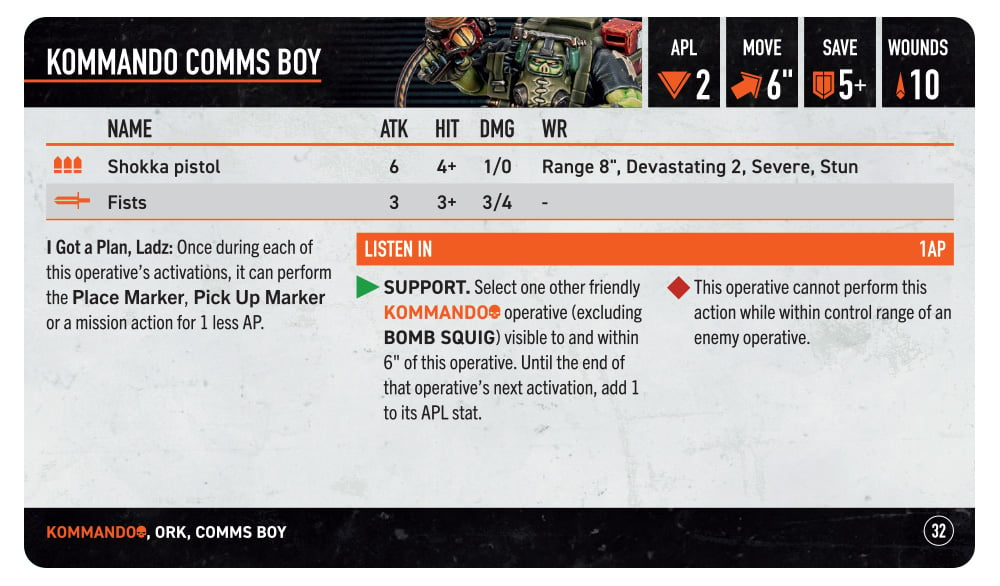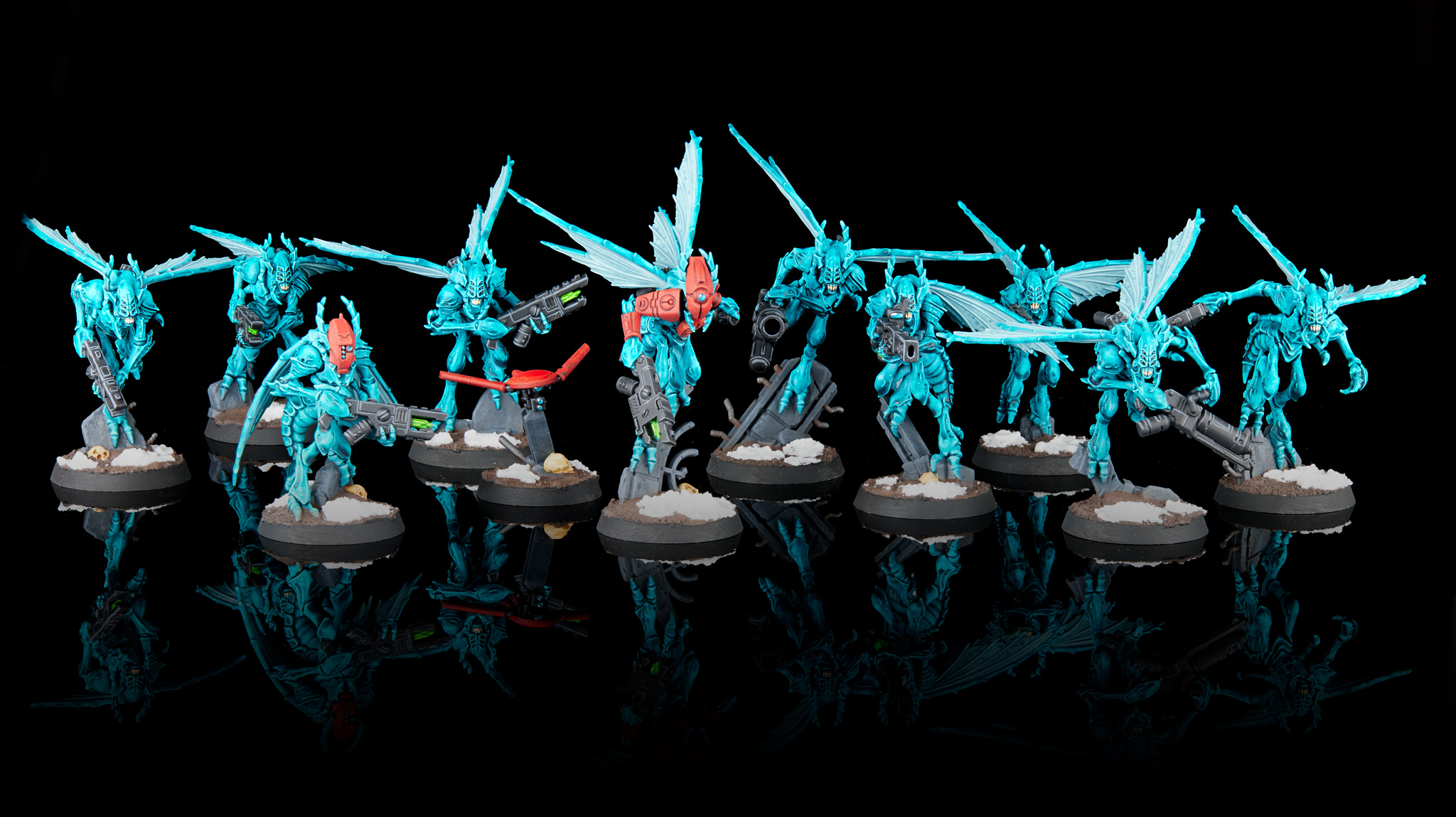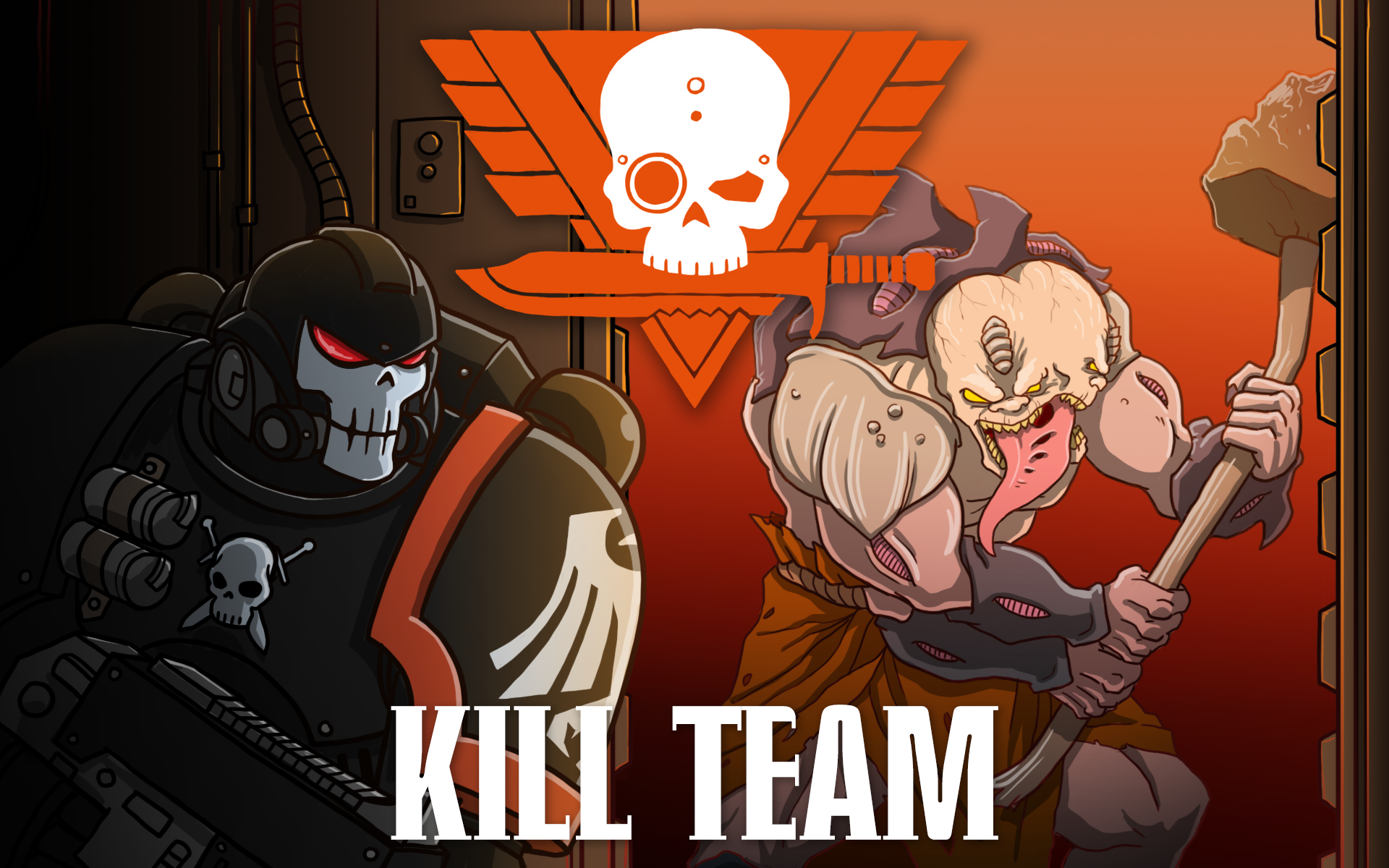It’s been three years since Kill Team 2021 overhauled the game, giving us the fully standalone Kill Team we’ve all fallen in love with in that time. Now Kill Team 2024 gives us a second version of that game, with streamlined rules, a new boxed set, and two new teams. It’s a slick presentation with some really cool concepts – but how are the new rules? Is this a better game? And did we need a new edition? In this review we’re going to dive into the new rules in the Core Rulebook and talk about how the game plays and what changed. So whether you’re completely new to Kill Team or a veteran of the prior edition, stick around and we’ll have everything you need to know here.
Before we dive in we’d like to thank Games Workshop for providing us with a preview copy of Kill Team: Hivestorm for review purposes.
What Is Kill Team?
Let’s start here. Kill Team is a skirmish-level tabletop wargame set in the Warhammer 40,000 universe. Instead of players piloting full armies with multiple squads and vehicles, players take control of a single squad of models, usually numbering between six and fourteen operatives. Games of Kill Team last four turns (called Turning Points), during which players alternate activating their operatives and performing actions with them. Victory is secured by accomplishing a series of objectives – these will typically be a mix of special actions, holding specific positions, and killing enemy operatives.
Kill Team is fast-paced (games can be played in under an hour), very tactical, and very narrative – the smaller board and scale makes things feel much more cinematic than a game of 40k, and any time you hear someone describe a game of Kill Team you immediately get a sense for how narrative the game is.
The Video Version of This Review
If you’d rather watch a video of this review, we’ve got you covered with this video from Can You Roll a Crit?:
What’s Up With the New Edition?
This new edition of Kill Team is a major revision on the prior edition – if you played the 2021 edition of Kill Team, this will feel very much like that, but there are a ton of changes to streamline the game and fix hairier parts of that ruleset which make this an entirely new game. To that point, while all of the kill teams from the prior edition are returning, they’ve received all new rules along with new statlines, equipment, and universal special rules.
The Turn
A game of Kill Team consists of four turns, called Turning Points. Each turn play progresses across two phases: First there’s the Strategy Phase, then there’s the Firefight phase. In the Strategy phase, players determine who has the initiative, gain Command Points, and use Gambits. Then in the Firefight phase they alternate activating operatives until all of their living operatives have been activated. Each time an operative is activated they can perform a number of actions equal to their APL characteristic. Actions include things like moving, Falling Back, Charging, Shooting, Fighting, and picking up objective markers.
Control Range
One new key principle to the Kill Team 2024 rules is Control Range, defined as the area within 1” of an operative’s base. Tons of rules in Kill Team 2024 refer to Control Range now when referring to the area around a model – for example, an operative is in cover if there’s intervening terrain between it and the firing model, and that terrain is within Control Range.

Datacards
Operatives in Kill Team are detailed on Datacards, which outline their basic characteristics, abilities, and weapons. Operatives have four characteristics:
- APL, which determines the number of Actions they can do per activation and the amount of control they exert over objectives
- Move, which determines how far they move – this is now a value in inches rather than an abstract symbol
- Save, which is the value they need to roll for their saving throws against attacks
- Wounds, the amount of damage they can take before they’re injured and die. When an operative has fewer than half its starting wounds remaining, it’s Injured, and it loses 2” of movement and gets -1 to the hit stat of its weapons.
The change to Movement – from symbols to inches – makes things a little bit easier to handle, and opens things up for more nuanced movement. For example: Aeldari operatives now move 7” instead of 6”, which wasn’t really possible when movement was defined in increments of 2”.
Orders
In Kill Team what your operatives can do and how they act in a turn depends on the order you give them. When you activate an Operative you give them one of two orders: Engage and Conceal. Operatives under the Engage Order move and do actions as normal, while operatives under the Conceal order can’t shoot or charge, and can’t counteract – but they aren’t a valid target while they’re in cover. This is how you stay out of trouble in Kill Team, using cover and the Conceal order to mask your approach and stay out of sight until it’s time to attack. Managing your orders is a huge part of the game’s tactics.
Shooting
When you make a ranged attack you pick a weapon your operative has, pick a valid target, then roll your attack dice to shoot them. This will usually mean rolling multiple attacks for a given gun. Rolls of a 6 to hit are Critical successes and do more damage, and if your target is obscured by terrain then you have to discard one of your successful hits and you can’t score any Crits – they just count as normal hits. This makes terrain incredibly important.
Once you score your hits, the opponent rolls three defence dice, looking to match their save characteristic, with 6s being critical successes. If they have cover, they automatically get to retain one die as a successful save. Normal successes can be used to block normal hits, while you need either a critical save or two normal successes to block a single critical hit. Once that’s done, you take damage based on the type of hit.
This is pretty straightforward but there are a number of ways this sequence can be modified, mostly by weapon abilities that add on damage or other effects based on the weapon or whether a critical hit was scored. There are enough of these abilities to take a bit of time to learn, but not so many that you won’t be able to retain all of them pretty quickly.
This is pretty much the same as Kill Team 2021, only now everyone always has three defence dice, and Obscuring terrain is a much bigger deal than it used to be.

Fighting
The other half of the “how do I kill things?” question, Fighting is your melee option. Note that Fighting is an action you do with an operative in control range of an enemy operative, so for an operative with 2 APL, the general activation process is “charge to get into control range, then fight.” When operatives fight they each pick a melee weapon then roll dice equal to the number of attacks they get with that weapon. Then, starting with the attack, players alternate resolving their successful attacks. As with shooting you can score critical hits here, and players can choose to resolve an attack by either doing damage or blocking an opponent’s unresolved attack. Only a critical success can be used to block another critical success.
This goes back and forth until either all attacks have been resolved or someone dies. Note that there is no saving throw at this point – when you resolve an attack as damage, your enemy just loses that many wounds. This makes melee in Kill Team a brutal affair – it’s rare to get into a fight without taking some damage, especially if an opponent knows they’re going to die and can just push through as much damage as possible before that happens.
Playing Games
On top of moving, shooting, and fighting, you can also pick up objective markers and do custom actions, but those make up the bulk of the gameplay in Kill Team. In that regard the base rules are relatively simple but there is a ton of variety and complexity introduced in the game’s Kill Zones and the Kill Teams. The 2024 rulebook outlines three major Kill Zones to play in: Volkus, a city fight setting with some buildings and higher floors to perch on, Gallowdark, the battles which take place inside massive spaceships, and Bheta-Decima, battles taking place on the gantries of an offshore platform. Each of these adds a very different feel to the game, along with introducing new rules to play.
Then there are the teams – that’s really where Kill Team shines. Many teams offer some customization but for the most part the game’s teams are more like characters in a fighting game, with specific abilities and move sets that make them unique. Your team will feel radically different based on whether they’re an elite team or horde team, what their rules are, and which killzone you’re playing on.

Spec Ops
It’s worth noting that Spec Ops appears to be gone – it’s just not part of the core rules. This is fine. While there is definitely a vocal minority of players who want lots of customization for teams and models in Kill Team a la Necromunda, Kill Team just isn’t that game. And in terms of narrative vs. competitive, Kill Team is already a tremendously narrative game and trying to separate its player base into “Narrative” and “competitive” buckets is likely a mistake. Spec Ops is gone but Kill Team can still make for great narrative campaigns and leagues, even without progression. This also makes it easier to work the game into 40k campaigns, if that’s your thing.
Final Verdict
Kill Team is likely the best-designed game ever released by Games Workshop. It’s tight, fun, and it manages to improve on its predecessor in nearly every way. Kill Team ‘21 grew well beyond the scope of its predecessor by truly becoming a standalone game and focusing on creating tight, balanced competitive play. This new edition takes the confidence earned over the last three years and turns it into a game that’s poised to break out further over the next three. There are still some growing pains here – the choice to rotate teams out of competitive play was always going to raise some hackles and it seems like Bheta-Decima is still dead on arrival as a killzone – but overall Kill Team is a fun game that’s easy to learn and quick to play and works equally well as both a casual and a competitive game.
Have any questions or feedback? Drop us a note in the comments below or email us at contact@goonhammer.com. Want articles like this linked in your inbox every Monday morning? Sign up for our newsletter. And don’t forget that you can support us on Patreon for backer rewards like early video content, Administratum access, an ad-free experience on our website and more.


